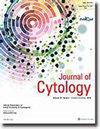浆液细胞病理学报告的国际系统:关于其含义和恶性肿瘤风险评估的机构经验的积液细胞学
IF 1
4区 医学
Q4 MEDICAL LABORATORY TECHNOLOGY
引用次数: 0
摘要
背景:“国际浆液细胞病理学报告系统”(TIS)包括五个诊断类别:非诊断性(ND)、恶性阴性(NFM)、意义不明的非典型性(AUS)、可疑恶性(SFM)和恶性(MAL)。本研究根据新提出的TIS对积液细胞学样本进行重新分类,计算每个类别的恶性风险(ROM)并进行性能分析。材料和方法:本研究是在印度北部一家三级保健机构进行的回顾性观察性研究。检索2013年6月至2021年7月病例的临床资料,由2名细胞病理学家对病例进行复查。所有病例根据拟议的TIS系统重新分类为五类。结果:8年时间共纳入2318例患者,其中胸膜积液细胞学检查1614例(69.6%),腹膜积液细胞学检查612例(26.4%),心包积液细胞学检查92例(3.9%)。根据TIS指南,将所有积液细胞学检查重新分类为ND、NFM、AUS、SFM和MAL,分别为4例(0.17%)、1756例(75.75%)、12例(0.51%)、57例(2.46%)和489例(21.11%),ROM分别为25%、17.9%、66.7%、75.4%和96.5%。结论:TIS是一种简单、方便、用户友好的系统,具有风险分层和对每个类别进行ROM的优点。TIS系统提出了一个分层方案,将积液细胞学分为明确的类别,因此假阳性和假阴性病例的机会较小。本文章由计算机程序翻译,如有差异,请以英文原文为准。
The international system for reporting serous fluid cytopathology: An institutional experience on its implication and assessment of risk of malignancy in effusion cytology
Background: The “international system for reporting serous fluid cytopathology”(TIS) consists of five diagnostic categories: nondiagnostic (ND), negative for malignancy (NFM), atypia of undetermined significance (AUS), suspicious for malignancy (SFM), and malignant (MAL). The study was conducted to reclassify effusion cytology samples according to the newly proposed TIS to calculate the risk of malignancy (ROM) for each category and to conduct performance analysis. Materials and Methods: The study was a retrospective observational study conducted at a tertiary care institution in North India. Clinical data of the cases from June 2013 to July 2021 were retrieved and the cases were reviewed by two cytopathologists. All cases were reclassified according to the proposed TIS system into five categories. Results: A total of 2318 patients were included in the study over a time span of 8 years, and 1614 (69.6%) cases of pleural effusion cytology, 612 (26.4%) cases of peritoneal effusion cytology, and 92 (3.9%) cases of pericardial effusion cytology were included. All effusion cytology smears were recategorized as per TIS guidelines into ND, NFM, AUS, SFM, and MAL with 4 (0.17%), 1756 (75.75%), 12 (0.51%), 57 (2.46%), and 489 (21.11%) cases, respectively, and ROM was 25%, 17.9%, 66.7%, 75.4%, and 96.5%, respectively, for the categories. Conclusion: Besides being a simple, easy, and user-friendly system, TIS has the benefit of risk stratification and ROM for each category. The TIS system proposed a tiered scheme, which places the effusion cytology into well-defined categories, and therefore has lesser chances of false-positive and false-negative cases.
求助全文
通过发布文献求助,成功后即可免费获取论文全文。
去求助
来源期刊

Journal of Cytology
MEDICAL LABORATORY TECHNOLOGY-
CiteScore
1.80
自引率
7.70%
发文量
34
审稿时长
46 weeks
期刊介绍:
The Journal of Cytology is the official Quarterly publication of the Indian Academy of Cytologists. It is in the 25th year of publication in the year 2008. The journal covers all aspects of diagnostic cytology, including fine needle aspiration cytology, gynecological and non-gynecological cytology. Articles on ancillary techniques, like cytochemistry, immunocytochemistry, electron microscopy, molecular cytopathology, as applied to cytological material are also welcome. The journal gives preference to clinically oriented studies over experimental and animal studies. The Journal would publish peer-reviewed original research papers, case reports, systematic reviews, meta-analysis, and debates.
 求助内容:
求助内容: 应助结果提醒方式:
应助结果提醒方式:


